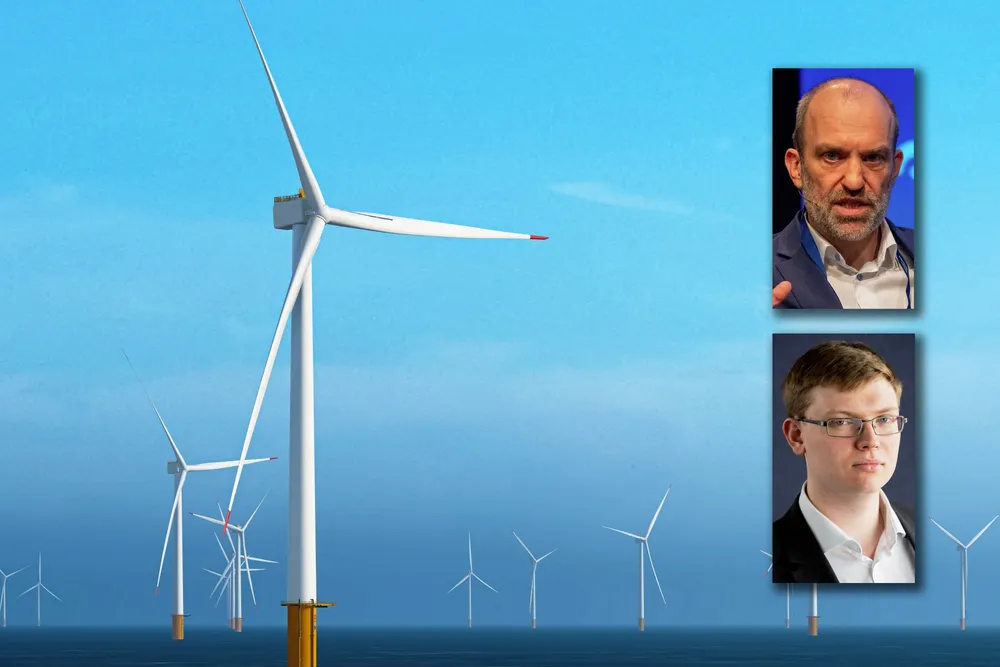Judgment day for Norway: Elections secured short-term offshore wind continuity – but failed lease round will threaten targets

Norway's election is over, and the votes are in. A minority government led by Labour leader Jonas Gahr Støre will continue, supported in parliament by four left-of-center parties that together with Labour will form an 88 v. 81 seat majority.
The election outcome is in isolation good news for the country‘s offshore wind aspirations as Labour is expected to stay the course, but the government will be dependent on a shaky coalition of offshore wind-supporting parties across the political spectrum in Stortinget, Norway’s parliament, to deliver on its longer-term ambitions.
TGS | 4C’s mapping shows that political support for offshore wind in the new parliament has declined. Parties supporting offshore wind will account for 53.4 percent of the seats in the new parliament (green in the table below), down 10.5 percentage points from the 2021-25 parliament.
Parties opposing the Labour government’s policies (red), notably the up to NKr58bn in government support for the Sørlige Nordsjø II (SNII) and Utsira Nord projects, will make up 38.4 percent of the seats, up 4.7 percentage points.
The remaining seats will be held by parties stating mixed support for offshore wind projects in Norway (yellow).
Monday’s elections strengthened the extremes on both sides of the political spectrum, with the Red Party on the left and the Progress Party on the right now holding a total of 33.1 percent of the seats, up 15.9 percentage points. Both parties, though political opposites, are vocal opponents of the Labour government’s offshore wind policy.
The Norwegian political discourse has recently been centered on CAPEX support for up to NKr35bn ($3.6bn) for one Utsira Nord project. Some parties either do not want to grant the government support or want to stop floating offshore wind altogether due to the high cost associated with the technology. The offshore wind supporting parties are keener on the technology and seek to make Norway an offshore wind export leader.
Norwegian politicians have touted the huge potential for offshore wind to deliver clean power, jobs and export revenues for nearly 20 years. Yet, successive governments on both sides have struggled to deliver on the industry’s hope for a home market.
Parliament voted in the Ocean Energy Act providing the overall regulatory framework for offshore wind back in 2010, and the government agency NVE identified SNII and Utsira Nord as suitable lease areas in 2012.
But it was not until 2020 that the then Conservatives-led government kicked off the lease award processes. SNII was awarded in 2024, while site award for up to three floating wind project areas at Utsira Nord is now expected in 2026 after several Energy Department delays.
In 2025, Norway accounts for 0.2 % of operational offshore wind capacity globally (except China) and 0.4 % of the offshore wind project pipeline under development, according to TGS | 4C data.
In the wake of the elections, the main business association NHO has called for a broad political consensus on tax and energy. That may offer the best hope for a more predictable and robust framework for offshore wind in Norway.
Monday is the day: Application deadline
In the very short-term, all offshore wind eyes will be on today's application deadline for the Utsira Nord site award competition. If Utsira Nord does not receive a minimum of two qualified applicants, the lease round will be cancelled or sent back to the drawing board. A failed lease round could be threatening to the Gahr Støre government’s targets, due to the negative market signal during a key timeframe of Norway’s energy transition.
On the other side of the aisle, the Conservative Party, traditionally a supporter of the offshore wind industry, has voted against two of the three support packages for offshore wind. The party voted for the NKr15bn subsidy for Sørlige Nordsjø II, but not for the subsequent NKr23bn Contract for Difference support for the same project that accounted for increased post-covid supply chain and financing costs. The Conservatives instead suggested that the whole Sørvest F, which includes SNII, be developed with a hybrid connection to lower the cost per project.
In the run up to the elections, Conservative party leaders cited higher offshore wind costs and criticized the Labour government for not providing sufficient information to parliament justifying the Utsira Nord CAPEX support.
In the new parliament, the Conservative Party will come under pressure from its right-hand flank represented by the populist Progress Party, which ran a campaign to stop all government support for “green” projects. The Progress Party will outnumber the Conservatives by 47 to 24 seats for the next four years.
The parties will have to ‘horse-trade’ when passing policies. Given that nearly every party wants different amounts of, government support for, directions for, and requirements for offshore wind, the direction the government will take is still contentious.
Currently, 72 of the 85 votes needed for a majority want no or less government support for offshore wind, 18 of which are in the Labour government-supporting coalition. Of course, perfect is the enemy of the good, and what Norway needs is a robust long-term plan. Some of the battle may be lost by Gahr Støre, but Norway can still hold potential if the government can find the right deal across the political spectrum.
(Copyright)